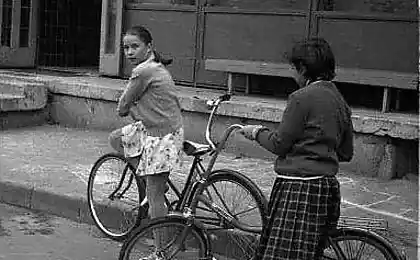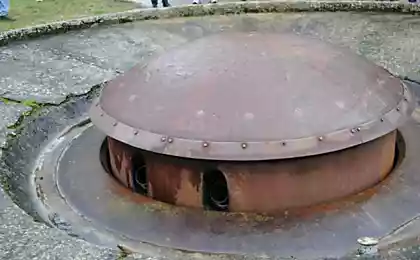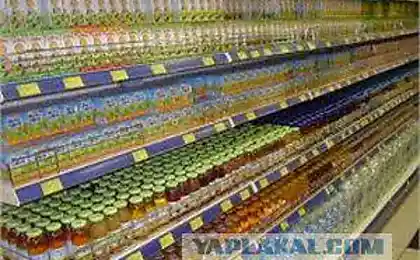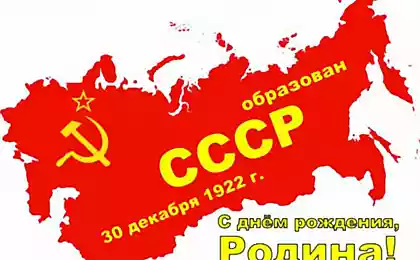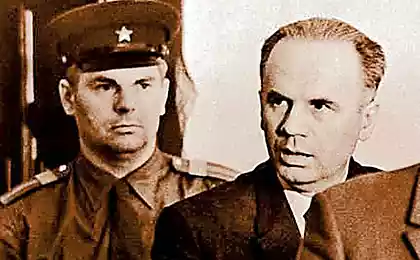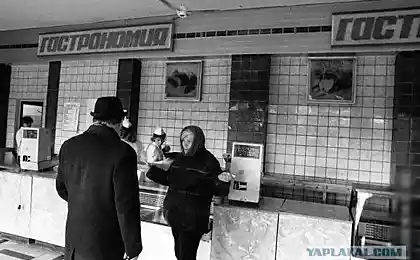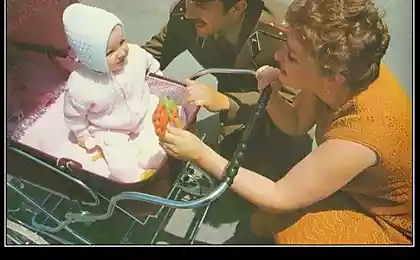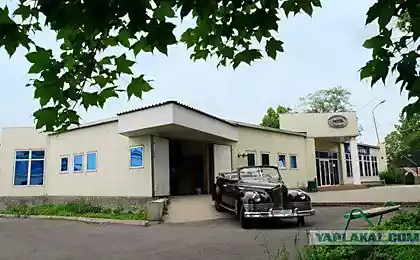1855
Soviet Armed Forces (82 photos)
Illustrated book on how to be well served in the Soviet army

USSR Armed Forces - the military organization of the Soviet state, intended for the protection of the socialist achievements of the Soviet people, the freedom and independence of the Soviet Union. Together with the armed forces of other socialist countries, they ensure the safety of the entire socialist community against the encroachments of the aggressors.
Stroybatovtsy BAM.
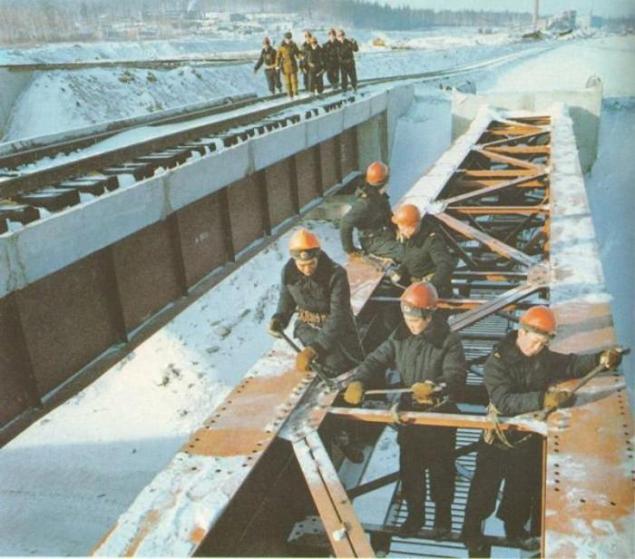
The Armed Forces of the USSR are divided into types: the Strategic Rocket Forces, Ground Forces, Defense Forces, Air Force, Navy, and include the Rear of the Armed Forces, headquarters and civil defense troops. Forms of the Armed Forces in turn are divided into combat arms, kind of forces (Navy) and special troops, who organizationally consist of the units, units and formations. The structure of the Armed Forces also includes the boundary and internal troops. The Armed Forces of the USSR have a single system of organization and staffing, centralized management, common principles for training and education of personnel and training of command staff, the general procedure for serving soldiers, sergeants and officer staff.
Sappers in action.

The Armed Forces of the USSR are divided into types: the Strategic Rocket Forces, Ground Forces, Defense Forces, Air Force, Navy, and include the Rear of the Armed Forces, headquarters and civil defense troops. Forms of the Armed Forces in turn are divided into combat arms, kind of forces (Navy) and special troops, who organizationally consist of the units, units and formations. The structure of the Armed Forces also includes the boundary and internal troops. The Armed Forces of the USSR have a single system of organization and staffing, centralized management, common principles for training and education of personnel and training of command staff, the general procedure for serving soldiers, sergeants and officer staff.
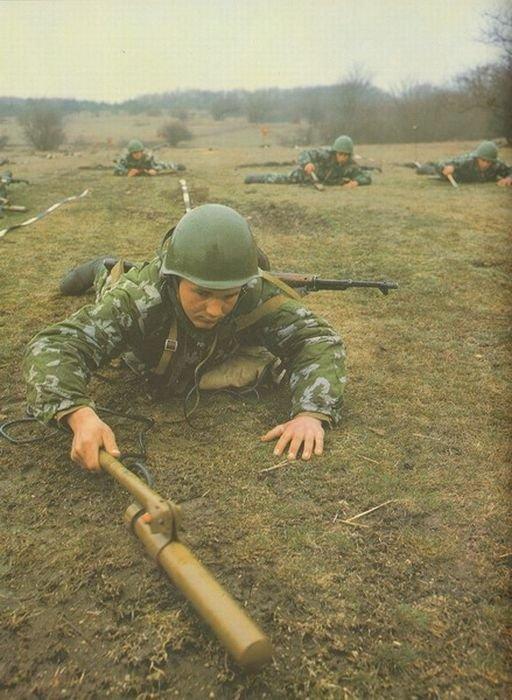
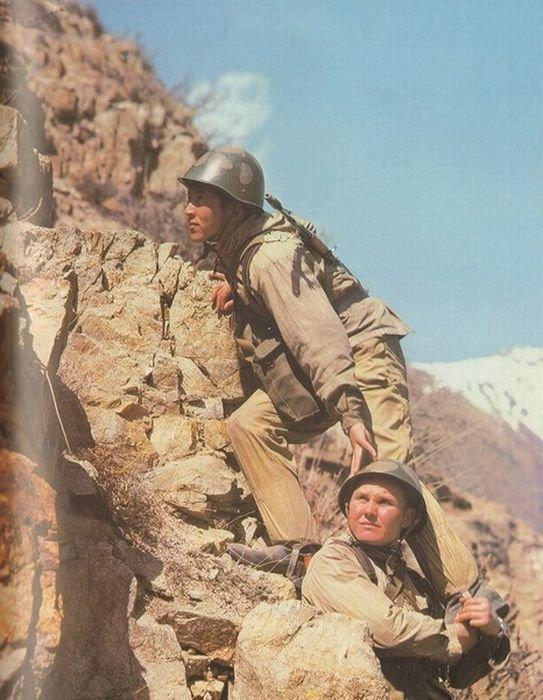
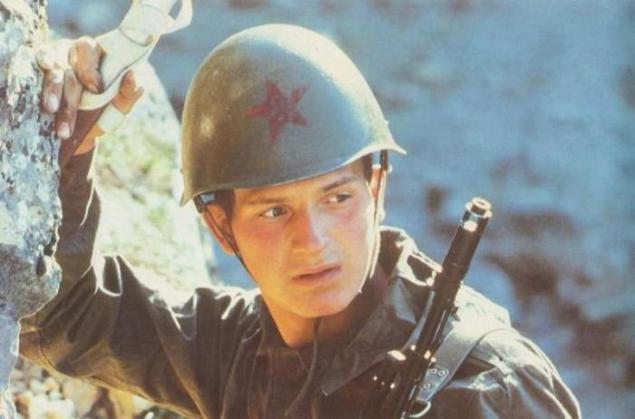
Fire during a training exercise.
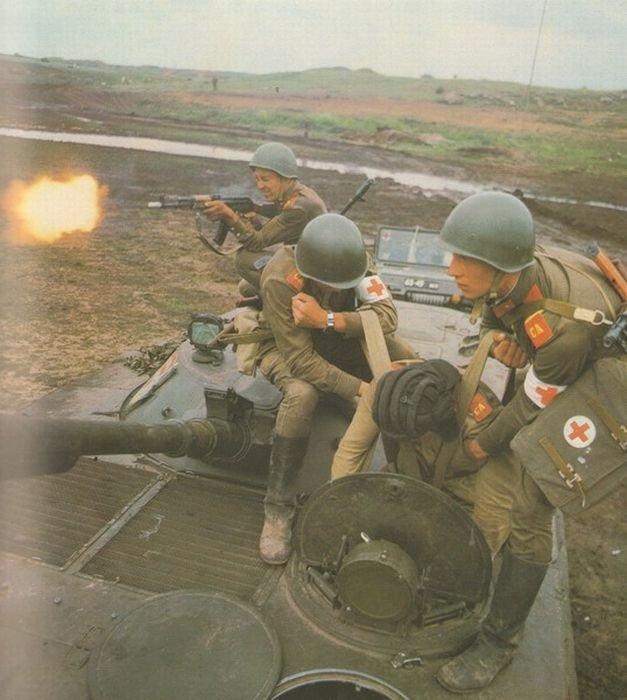
The direct management of the Armed Forces by the Ministry of Defence. He was subject to all kinds of the Armed Forces, Rear of the Armed Forces staffs and civil defense troops. Every kind of armed forces led by the appropriate commander in chief, who is the deputy. Minister of Defence. Border and internal troops, respectively led by the State Security Committee of the Council of Ministers and the Ministry of Internal Affairs of the USSR. The structure of the Ministry of Defence includes the General Staff of the Armed Forces of the USSR, the control-chief of the Armed Forces, the Office of Logistics of the Armed Forces, the main and central directorates (Central Directorate of Personnel, Central financial management, administration and others.), As well as the military controls and the establishment of the Civil defense. The Ministry of Defense, among other tasks assigned to: the development of plans for the construction and development of the Armed Forces in peacetime and wartime, improving the organization of troops, weapons and military equipment of the Armed Forces with weapons and all kinds of material supply, the management of operational and combat training of troops and a number of other functions defined by the requirements of the protection of the state. Leaders of the Party and political work in the Armed Forces of the CPSU from the Main Political Directorate of the Soviet Army and Navy, working as a department of the Central Committee of the CPSU. It directs the political authorities, army and navy party and Komsomol organizations, provides party influence on all aspects of life of military personnel, directs the activities of political agencies and party organizations to improve the combat readiness of troops, strengthen military discipline and political and moral state of personnel.
The crossing on the pontoon.

Artillery crew during exercises.
Financial and technical support for the Armed Forces to manage and service the rear, subordinates Deputy Defence Minister - Chief of Logistics of the Armed Forces.

The territory of the USSR is divided into military districts. Military district may cover the territory of several territories and republics or regions. To fulfill allied commitments of the joint security of the socialist states temporarily on the territory of the GDR, Poland, Hungary and Czechoslovakia is a group of Soviet troops. The branches of the Armed Forces, military districts, groups of forces, air defense districts, fleets established military councils, which have the right to examine and deal with all the important questions of life and activity of the respective forces of the Armed Forces, the District. They bear full responsibility before the Central Committee, the government and the Minister of Defense of the execution of the party and government in the Armed Forces as well as orders of the Minister of Defence.

On the submarine.
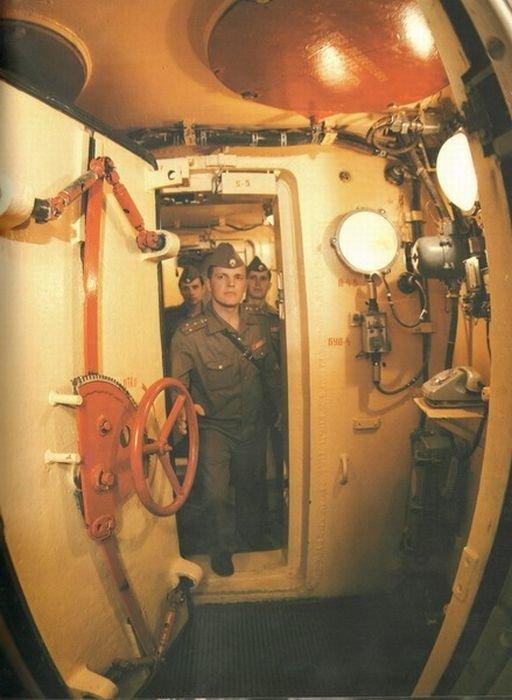
Against the background of the monument Motherland in the hero-city of Volgograd.
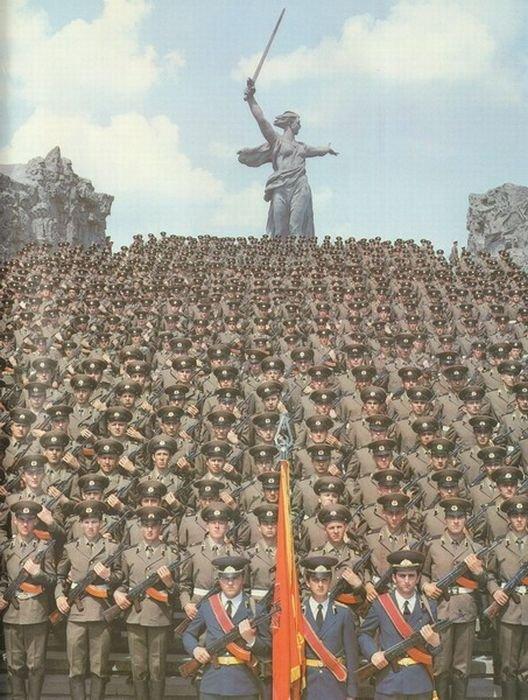
Acquisition of the Armed Forces soldiers, sergeants and petty officers of the call is held by Soviet citizens for military service, component, according to the USSR Constitution and the law on universal conscription, 1967, the honorable duty of citizens of the USSR (see. Conscription in the USSR). The call is made by the order of Minister of Defense throughout 2 times a year: in May - June and November - December. On active military service are encouraged to male citizens who have reached the age of 18 the day of the call, the service life of 1, 5 and 3 years, depending on their education and of the Armed Forces. An additional source of recruitment is receiving military and those who are in the reserve, on a voluntary basis to positions of warrant officers, as well as to re-enlist. Officers are recruited on a voluntary basis. Officers trained in secondary and higher military schools of the Armed Forces relevant and branches; officers, political workers - in the higher military-political school. In order to prepare young men for higher military schools there Suvorov and Nakhimov schools. Further training of officers is carried out at the highest rates of improvement officers, as well as in the military and political training. The governing team, political, engineering and other officers are trained in the military, air, naval and special academies.

Communication with the commander.

The ceremony of taking the oath.
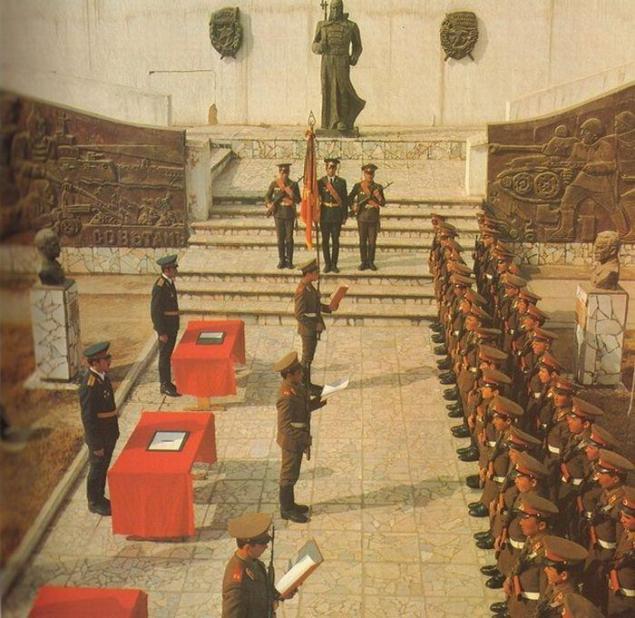
The history of the Soviet Army and Navy began with the formation of the world's first socialist state. Soviet people after the October Revolution of 1917 not only had to build a new society, but also to defend it by force of arms from the internal counter-revolution and repeated attacks of international imperialism. The Armed Forces of the USSR were established directly under the guidance of the Communist Party. Lenin, on the basis of the provisions of the Marxist-Leninist teaching on war and the army. Resolution of the 2nd All-Russian Congress of Soviets on October 26 (November 8), 1917, during the formation of the Soviet government established the Committee on Military and Naval Affairs in the composition of VA Antonov-Ovseenko, NV Krylenko, PE Dybenko; October 27 (November 9), 1917, called the Council of People's Commissars of Military and Naval Affairs, December 1917 - The College of military commissioners, since February 1918 - 2 Commissariat: for Military and Naval Affairs. The main armed force in the overthrow of the bourgeoisie and the landlords and the conquest of power by the workers were Red Guards and the revolutionary sailors of the Baltic Fleet, the soldiers of the Petrograd garrison and others. Based on the working class and poor peasants, they played a crucial role in the victory of the October Revolution of 1917, in the defense of the young Soviet republic in the center and in the field in the defeat in late 1917 - early 1918, counter-revolutionary rebellion Kerensky - Krasnov beneath Petrograd, Kaledin on the Don, Dutova in the southern Urals, in ensuring the triumphal march of Soviet power throughout Russia.

Army initiative.

"... The Red Guards fought in the noble and supreme historical cause of liberating the working and exploited people from the yoke of the exploiters" (VI Lenin, Full. Cit. Cit., 5 ed., Vol. 36, p. 177).

In early 1918 it became obvious that the forces of the Red Guards and detachments of revolutionary soldiers and sailors, is obviously not enough for reliable defense of the Soviet state. In an effort to strangle the revolution imperialist states, especially Germany, have made an intervention against the young Soviet republic, has merged with the performance of the internal counterrevolution: White Guard mutiny and conspiracy SRs, the Mensheviks, the remnants of the various bourgeois parties. We need regular armed forces were capable of defending the Soviet state from numerous enemies.
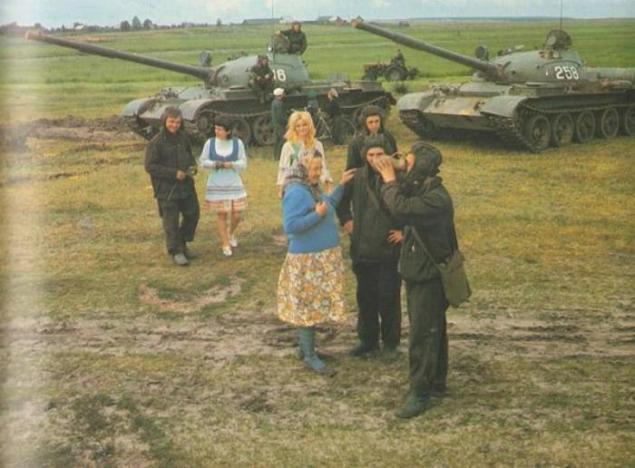
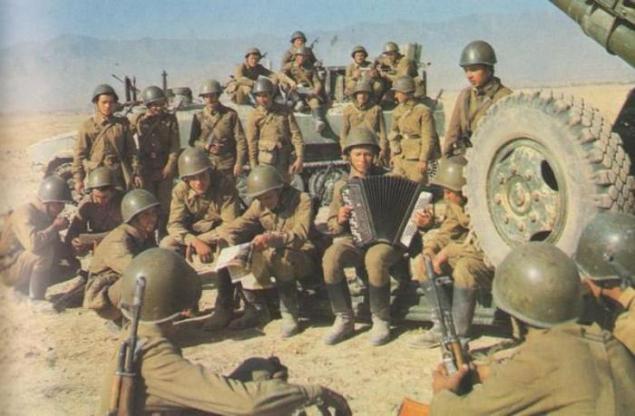
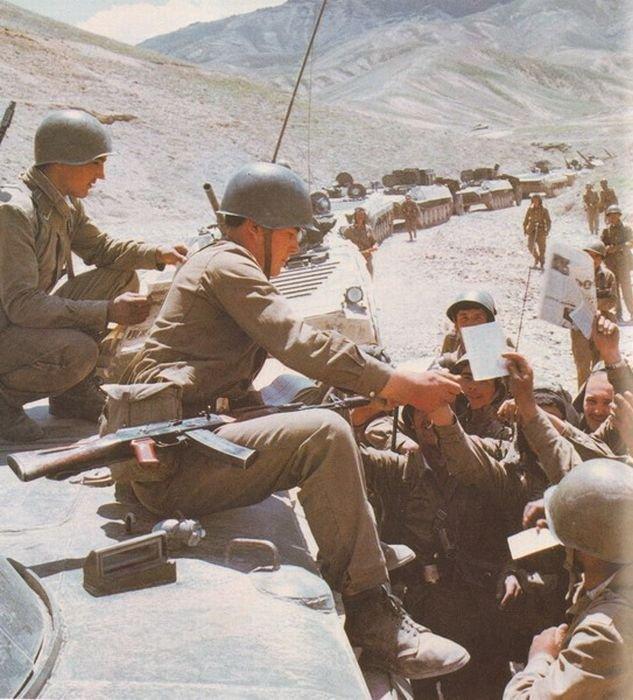
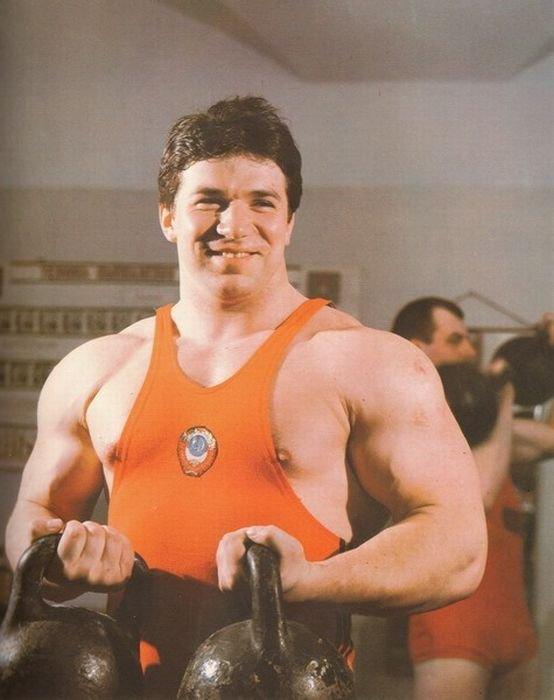
15 (28), 1918 People's Commissars adopted a decree on the establishment of the Workers 'and Peasants' Red Army (Red Army) and January 29 (February 11) - Decree on the establishment of the Workers 'and Peasants' Red Fleet (RKKF) on a voluntary basis. The direct management of the formation of the Red Army carried out the All-Russian Collegium, the CPC established 15 (28), 1918 at the People's Commissariat for Military Affairs. In connection with the violation of the armistice by Germany and the transition of its troops on the offensive on February 22 the Soviet government appealed to the people with the written appeal, Lenin's decree "The Socialist Fatherland is in danger!". This decree was the beginning of mass record of volunteers in the Red Army and the formation of many of its parts. In commemoration of the general mobilization of the revolutionary forces in the defense of the socialist fatherland and brave resistance detachments of the Red Army invaders February 23 is celebrated annually in the Soviet Union as a national holiday - the Day of the Soviet Army and Navy.
The army bath.
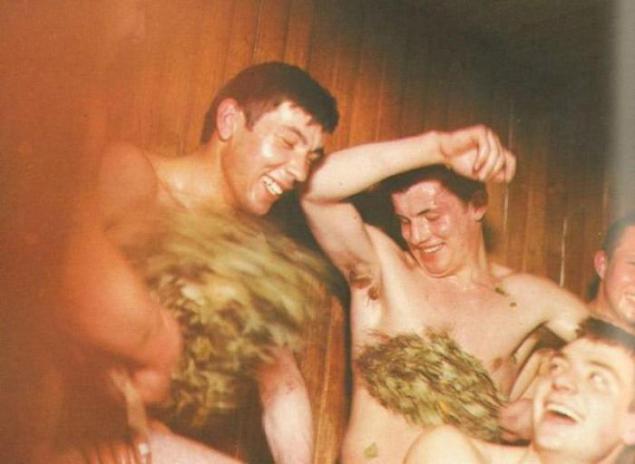
Physical training.

During the Civil War of 1918-20, the Red Army and Red Navy construction was carried out in extremely difficult conditions. The country's economy has been undermined, rail disorganized, food supplies to the army carried out irregularly, weapons and uniforms missing. The Army did not have the necessary number of command personnel; means. of the officers of the old army was on the side of the counterrevolution. The peasants, from which largely completed with the ordinary and NCOs, devastated the 1 st World War, 1914-18, he is not inclined to go into the army voluntarily. All these difficulties are exacerbated by the sabotage of the old bureaucratic apparatus, the bourgeois intellectuals and kulaks.
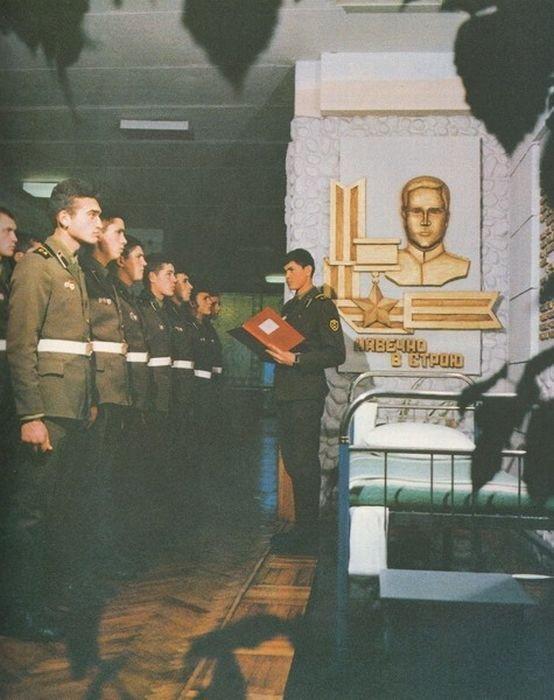
A veteran and a conscript.
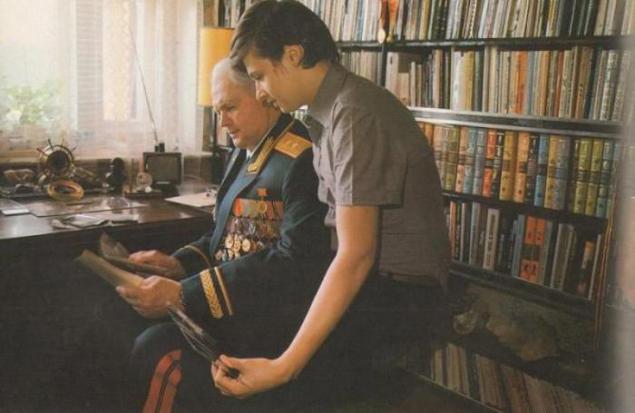
From January to May 1918 the Red Army and Red Navy manned by volunteers, team composition (up to the commander of the regiment) was selected; the number of volunteer units was extremely inadequate. By April 20, 1918 the Red Army numbered only 196 thousand. People. Picking Army volunteers and elected commanders could not ensure the creation of the mass of the regular army, which was needed in the international situation and the conditions of expansion of the Civil War. March 4, 1918 for the management of military operations and organization of the army was formed by the Supreme Military Council. April 8 SNK adopted a decree on the establishment of township, county, provincial and district commissioners for Military Affairs, May 8 instead of the All-Russia panel on the formation of the Red Army was created by Russian headquarters (Vseroglavshtab) - the highest executive body in charge of mobilization, formation, unit and training of troops . Decree of the Central Executive Committee on April 22 was introduced universal military training of workers (Vsevobuch) command of the authorities began to appoint the military. Due to the shortage of qualified personnel in command the army and navy were involved former officers and generals; It was formed by the institution of military commissars.
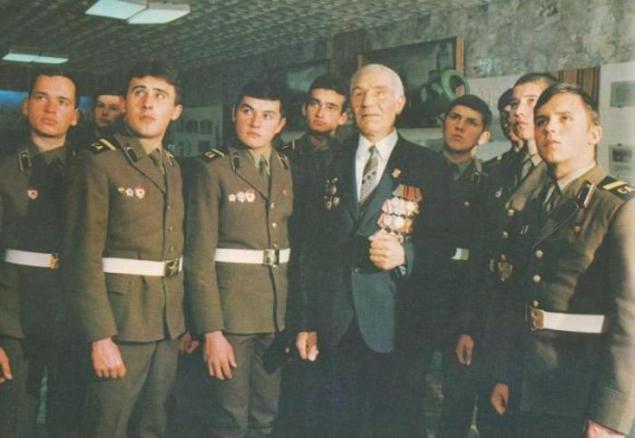
Military ID.

July 10, 1918 5-th All-Russian Congress of Soviets adopted a resolution "On organization of the Red Army" based on conscription of workers aged 18 to 40 years. The transition to compulsory military service would dramatically increase the size of the Red Army. By early September, 1918, in its ranks, there were already 550 thousand. People. September 6, 1918 simultaneously with the announcement of martial law instead of the Supreme Military Council was created by the Revolutionary Military Council of the Republic (RVSR), whose function is operational and organizational control of the troops. In September 1918 RVSR were transferred to the functions and staff of the People's Commissariat for Military Affairs, and in December 1918 - the People's Commissariat for Maritime Affairs (became part RVSR as the Marine Department). RVSR directs the actions of the army through its members - Commander of all the armed forces of the Republic (Commander: September 1918 - II Vatsetis, from July 1919 - SS Kamenev). September 6, 1918 was established the headquarters of the Revolutionary Military Council of the Republic Field (February 10, 1921 merged with Vseroglavshtabom headquarters in the Red Army), a subordinate commander in chief and the troops involved in the preparation and supervision of military operations.


Political information.

Party-political work in the army and the navy carried out the RCP (b) through the All-Russia Bureau of Military Commissars (created April 8, 1918), which is April 18, 1919 by the decision of the 8th Party Congress was replaced by the Department RVSR renamed May 26, 1919 in the Political Directorate (PUR) with RVSR, at the same time is a department of the Central Committee of the RCP (o). The troops of party-political work conducted political departments and Party organizations (cells).

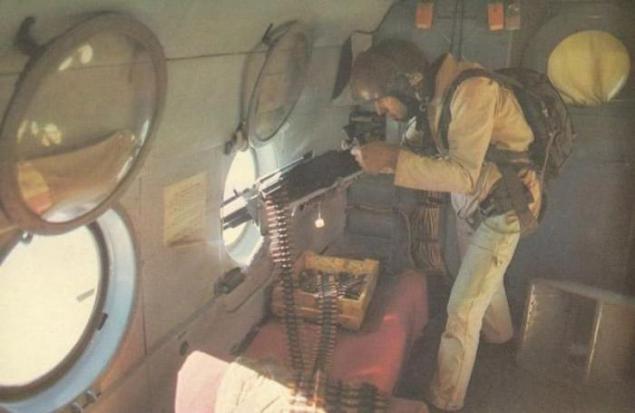
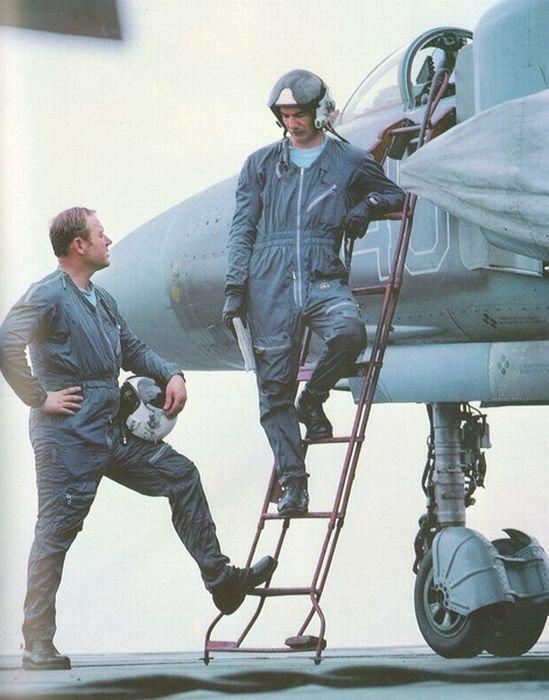
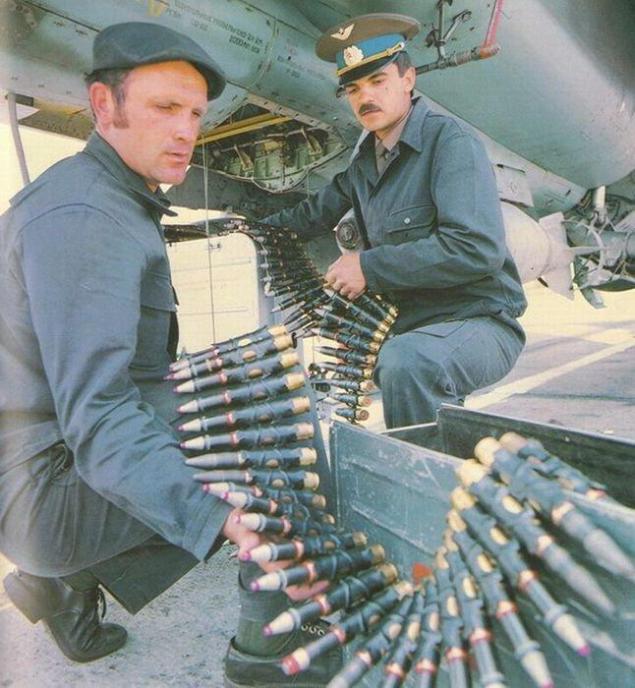
In 1919, based on the decisions of the 8th Congress of the Party to complete the transition to the regular mass army, a strong proletarian, politically conscious cadre core of personnel, unified system of recruitment, stable organization of troops, centralized management and effective party-political apparatus. Construction of the Armed Forces of the Soviet Union took place in a bitter struggle with the "military opposition", which opposed the creation of a regular army, defended the remnants of guerrilla forces in the management and conduct of the war, underestimated the role of the old military specialists.
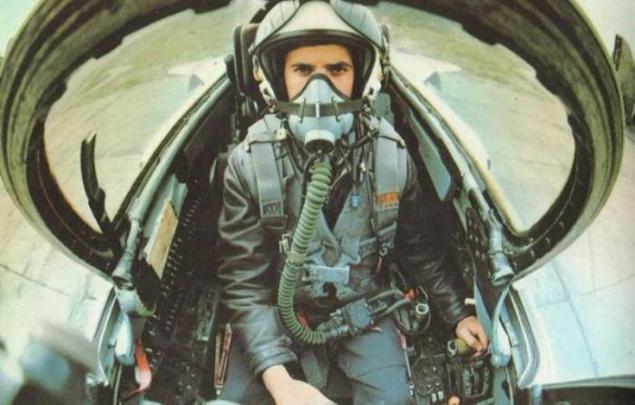
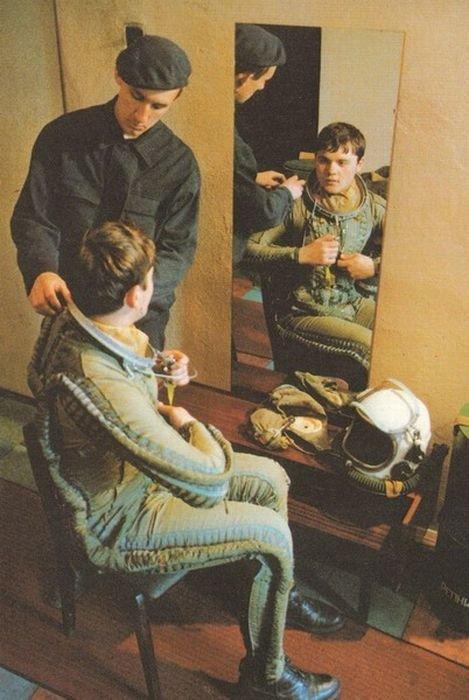
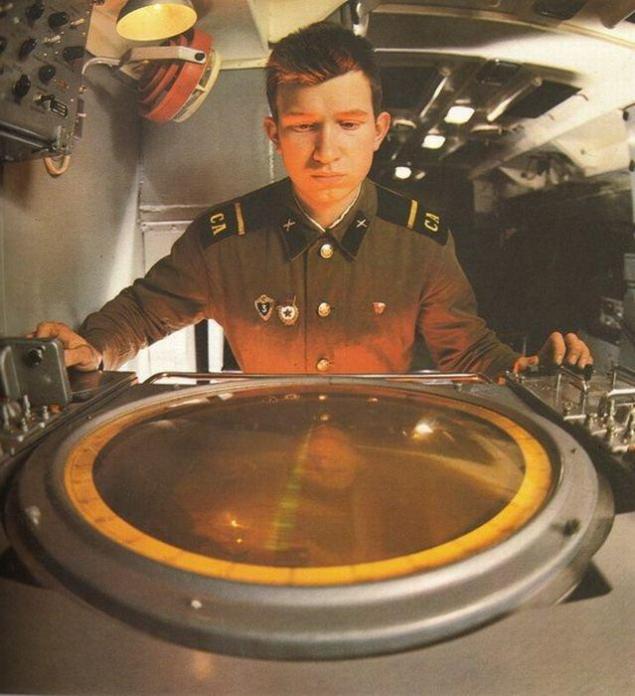
By the end of 1919 the number of Red Army reached 3 million. Pers., By the fall of 1920 - 5 of 5 million. Pers. The proportion was 15% of workers, peasants - 77%, other - 8%. Total for 1918-20 was formed 88 infantry and 29 cavalry divisions, 67 squadrons (300-400 aircraft), as well as a number of artillery and armored units. There were 2 spare (reserve) military (and the Republic of South-Eastern. Front) and of the Universal Military Training, which trained about 800 thousand. People. During the years of the Civil War, six military academies and more than 150 courses and schools (October 1920) prepared by the workers and peasants of 40 thousand. Commanders. On August 1, 1920 in the Red Army and Navy, there were about 300 thousand. Communists (about 1/2 of all members of the Party), is a cementitious core of the army and navy. About 50 thousand. Of them died a heroic death during the Civil War.
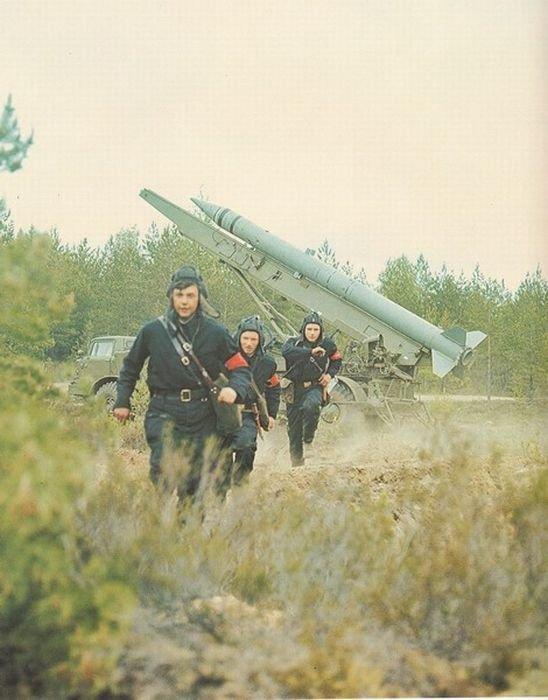

In the summer and autumn of 1918 reduced operating forces began in the army and fronts led by the Revolutionary Military Council (PBC) of 2-4 members. By the autumn of 1919, there were 7 of fronts, each of 2 to 5 armies. Total was in front 16-18 field armies, one Cavalry Army (1st) and several individual cavalry corps. In 1920 it was formed the 2nd Cavalry Army.

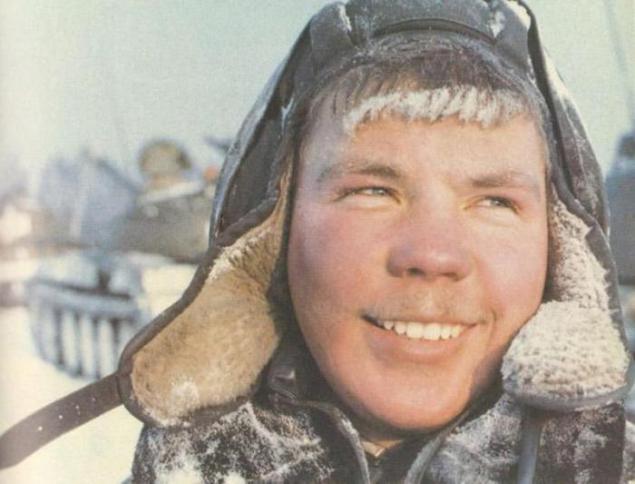
During the struggle against the interventionists and White Guards used mainly adopt the old army. At the same time the party adopted emergency measures to establish military industry and unparalleled heroism of the working class allowed to go to an organized supply the Red Army with arms, ammunition and uniforms of Soviet production. The average issue rifles in 1920 amounted to more than 56 thousand. Pcs. Cartridges - 58 million. Pcs. In 1919 the company built 258 aircraft and 50 aircraft repaired.


Together with the creation of the Red Army was born and developed Soviet military science, based on the Marxist-Leninist teaching on war and the army, the revolutionary struggle of the masses, the past achievements of military theory, creatively processed with the new conditions. It was published the first statutes of the Red Army in 1918 - Statute of the Internal Service, Charter garrison duty, Field Service Regulations, 1919 - Disciplinary Regulations. A major contribution to the Soviet military science were Lenin's position on the nature and character of the war, the role of the masses, the social order, the economy in achieving victory. Already at that time clearly manifested the characteristic features of Soviet military art: the revolutionary creative activity; intransigence of the template; ability to determine the direction of the main attack;

USSR Armed Forces - the military organization of the Soviet state, intended for the protection of the socialist achievements of the Soviet people, the freedom and independence of the Soviet Union. Together with the armed forces of other socialist countries, they ensure the safety of the entire socialist community against the encroachments of the aggressors.
Stroybatovtsy BAM.

The Armed Forces of the USSR are divided into types: the Strategic Rocket Forces, Ground Forces, Defense Forces, Air Force, Navy, and include the Rear of the Armed Forces, headquarters and civil defense troops. Forms of the Armed Forces in turn are divided into combat arms, kind of forces (Navy) and special troops, who organizationally consist of the units, units and formations. The structure of the Armed Forces also includes the boundary and internal troops. The Armed Forces of the USSR have a single system of organization and staffing, centralized management, common principles for training and education of personnel and training of command staff, the general procedure for serving soldiers, sergeants and officer staff.
Sappers in action.

The Armed Forces of the USSR are divided into types: the Strategic Rocket Forces, Ground Forces, Defense Forces, Air Force, Navy, and include the Rear of the Armed Forces, headquarters and civil defense troops. Forms of the Armed Forces in turn are divided into combat arms, kind of forces (Navy) and special troops, who organizationally consist of the units, units and formations. The structure of the Armed Forces also includes the boundary and internal troops. The Armed Forces of the USSR have a single system of organization and staffing, centralized management, common principles for training and education of personnel and training of command staff, the general procedure for serving soldiers, sergeants and officer staff.



Fire during a training exercise.

The direct management of the Armed Forces by the Ministry of Defence. He was subject to all kinds of the Armed Forces, Rear of the Armed Forces staffs and civil defense troops. Every kind of armed forces led by the appropriate commander in chief, who is the deputy. Minister of Defence. Border and internal troops, respectively led by the State Security Committee of the Council of Ministers and the Ministry of Internal Affairs of the USSR. The structure of the Ministry of Defence includes the General Staff of the Armed Forces of the USSR, the control-chief of the Armed Forces, the Office of Logistics of the Armed Forces, the main and central directorates (Central Directorate of Personnel, Central financial management, administration and others.), As well as the military controls and the establishment of the Civil defense. The Ministry of Defense, among other tasks assigned to: the development of plans for the construction and development of the Armed Forces in peacetime and wartime, improving the organization of troops, weapons and military equipment of the Armed Forces with weapons and all kinds of material supply, the management of operational and combat training of troops and a number of other functions defined by the requirements of the protection of the state. Leaders of the Party and political work in the Armed Forces of the CPSU from the Main Political Directorate of the Soviet Army and Navy, working as a department of the Central Committee of the CPSU. It directs the political authorities, army and navy party and Komsomol organizations, provides party influence on all aspects of life of military personnel, directs the activities of political agencies and party organizations to improve the combat readiness of troops, strengthen military discipline and political and moral state of personnel.
The crossing on the pontoon.

Artillery crew during exercises.
Financial and technical support for the Armed Forces to manage and service the rear, subordinates Deputy Defence Minister - Chief of Logistics of the Armed Forces.

The territory of the USSR is divided into military districts. Military district may cover the territory of several territories and republics or regions. To fulfill allied commitments of the joint security of the socialist states temporarily on the territory of the GDR, Poland, Hungary and Czechoslovakia is a group of Soviet troops. The branches of the Armed Forces, military districts, groups of forces, air defense districts, fleets established military councils, which have the right to examine and deal with all the important questions of life and activity of the respective forces of the Armed Forces, the District. They bear full responsibility before the Central Committee, the government and the Minister of Defense of the execution of the party and government in the Armed Forces as well as orders of the Minister of Defence.

On the submarine.

Against the background of the monument Motherland in the hero-city of Volgograd.

Acquisition of the Armed Forces soldiers, sergeants and petty officers of the call is held by Soviet citizens for military service, component, according to the USSR Constitution and the law on universal conscription, 1967, the honorable duty of citizens of the USSR (see. Conscription in the USSR). The call is made by the order of Minister of Defense throughout 2 times a year: in May - June and November - December. On active military service are encouraged to male citizens who have reached the age of 18 the day of the call, the service life of 1, 5 and 3 years, depending on their education and of the Armed Forces. An additional source of recruitment is receiving military and those who are in the reserve, on a voluntary basis to positions of warrant officers, as well as to re-enlist. Officers are recruited on a voluntary basis. Officers trained in secondary and higher military schools of the Armed Forces relevant and branches; officers, political workers - in the higher military-political school. In order to prepare young men for higher military schools there Suvorov and Nakhimov schools. Further training of officers is carried out at the highest rates of improvement officers, as well as in the military and political training. The governing team, political, engineering and other officers are trained in the military, air, naval and special academies.

Communication with the commander.

The ceremony of taking the oath.

The history of the Soviet Army and Navy began with the formation of the world's first socialist state. Soviet people after the October Revolution of 1917 not only had to build a new society, but also to defend it by force of arms from the internal counter-revolution and repeated attacks of international imperialism. The Armed Forces of the USSR were established directly under the guidance of the Communist Party. Lenin, on the basis of the provisions of the Marxist-Leninist teaching on war and the army. Resolution of the 2nd All-Russian Congress of Soviets on October 26 (November 8), 1917, during the formation of the Soviet government established the Committee on Military and Naval Affairs in the composition of VA Antonov-Ovseenko, NV Krylenko, PE Dybenko; October 27 (November 9), 1917, called the Council of People's Commissars of Military and Naval Affairs, December 1917 - The College of military commissioners, since February 1918 - 2 Commissariat: for Military and Naval Affairs. The main armed force in the overthrow of the bourgeoisie and the landlords and the conquest of power by the workers were Red Guards and the revolutionary sailors of the Baltic Fleet, the soldiers of the Petrograd garrison and others. Based on the working class and poor peasants, they played a crucial role in the victory of the October Revolution of 1917, in the defense of the young Soviet republic in the center and in the field in the defeat in late 1917 - early 1918, counter-revolutionary rebellion Kerensky - Krasnov beneath Petrograd, Kaledin on the Don, Dutova in the southern Urals, in ensuring the triumphal march of Soviet power throughout Russia.

Army initiative.

"... The Red Guards fought in the noble and supreme historical cause of liberating the working and exploited people from the yoke of the exploiters" (VI Lenin, Full. Cit. Cit., 5 ed., Vol. 36, p. 177).

In early 1918 it became obvious that the forces of the Red Guards and detachments of revolutionary soldiers and sailors, is obviously not enough for reliable defense of the Soviet state. In an effort to strangle the revolution imperialist states, especially Germany, have made an intervention against the young Soviet republic, has merged with the performance of the internal counterrevolution: White Guard mutiny and conspiracy SRs, the Mensheviks, the remnants of the various bourgeois parties. We need regular armed forces were capable of defending the Soviet state from numerous enemies.




15 (28), 1918 People's Commissars adopted a decree on the establishment of the Workers 'and Peasants' Red Army (Red Army) and January 29 (February 11) - Decree on the establishment of the Workers 'and Peasants' Red Fleet (RKKF) on a voluntary basis. The direct management of the formation of the Red Army carried out the All-Russian Collegium, the CPC established 15 (28), 1918 at the People's Commissariat for Military Affairs. In connection with the violation of the armistice by Germany and the transition of its troops on the offensive on February 22 the Soviet government appealed to the people with the written appeal, Lenin's decree "The Socialist Fatherland is in danger!". This decree was the beginning of mass record of volunteers in the Red Army and the formation of many of its parts. In commemoration of the general mobilization of the revolutionary forces in the defense of the socialist fatherland and brave resistance detachments of the Red Army invaders February 23 is celebrated annually in the Soviet Union as a national holiday - the Day of the Soviet Army and Navy.
The army bath.

Physical training.

During the Civil War of 1918-20, the Red Army and Red Navy construction was carried out in extremely difficult conditions. The country's economy has been undermined, rail disorganized, food supplies to the army carried out irregularly, weapons and uniforms missing. The Army did not have the necessary number of command personnel; means. of the officers of the old army was on the side of the counterrevolution. The peasants, from which largely completed with the ordinary and NCOs, devastated the 1 st World War, 1914-18, he is not inclined to go into the army voluntarily. All these difficulties are exacerbated by the sabotage of the old bureaucratic apparatus, the bourgeois intellectuals and kulaks.

A veteran and a conscript.

From January to May 1918 the Red Army and Red Navy manned by volunteers, team composition (up to the commander of the regiment) was selected; the number of volunteer units was extremely inadequate. By April 20, 1918 the Red Army numbered only 196 thousand. People. Picking Army volunteers and elected commanders could not ensure the creation of the mass of the regular army, which was needed in the international situation and the conditions of expansion of the Civil War. March 4, 1918 for the management of military operations and organization of the army was formed by the Supreme Military Council. April 8 SNK adopted a decree on the establishment of township, county, provincial and district commissioners for Military Affairs, May 8 instead of the All-Russia panel on the formation of the Red Army was created by Russian headquarters (Vseroglavshtab) - the highest executive body in charge of mobilization, formation, unit and training of troops . Decree of the Central Executive Committee on April 22 was introduced universal military training of workers (Vsevobuch) command of the authorities began to appoint the military. Due to the shortage of qualified personnel in command the army and navy were involved former officers and generals; It was formed by the institution of military commissars.

Military ID.

July 10, 1918 5-th All-Russian Congress of Soviets adopted a resolution "On organization of the Red Army" based on conscription of workers aged 18 to 40 years. The transition to compulsory military service would dramatically increase the size of the Red Army. By early September, 1918, in its ranks, there were already 550 thousand. People. September 6, 1918 simultaneously with the announcement of martial law instead of the Supreme Military Council was created by the Revolutionary Military Council of the Republic (RVSR), whose function is operational and organizational control of the troops. In September 1918 RVSR were transferred to the functions and staff of the People's Commissariat for Military Affairs, and in December 1918 - the People's Commissariat for Maritime Affairs (became part RVSR as the Marine Department). RVSR directs the actions of the army through its members - Commander of all the armed forces of the Republic (Commander: September 1918 - II Vatsetis, from July 1919 - SS Kamenev). September 6, 1918 was established the headquarters of the Revolutionary Military Council of the Republic Field (February 10, 1921 merged with Vseroglavshtabom headquarters in the Red Army), a subordinate commander in chief and the troops involved in the preparation and supervision of military operations.


Political information.

Party-political work in the army and the navy carried out the RCP (b) through the All-Russia Bureau of Military Commissars (created April 8, 1918), which is April 18, 1919 by the decision of the 8th Party Congress was replaced by the Department RVSR renamed May 26, 1919 in the Political Directorate (PUR) with RVSR, at the same time is a department of the Central Committee of the RCP (o). The troops of party-political work conducted political departments and Party organizations (cells).




In 1919, based on the decisions of the 8th Congress of the Party to complete the transition to the regular mass army, a strong proletarian, politically conscious cadre core of personnel, unified system of recruitment, stable organization of troops, centralized management and effective party-political apparatus. Construction of the Armed Forces of the Soviet Union took place in a bitter struggle with the "military opposition", which opposed the creation of a regular army, defended the remnants of guerrilla forces in the management and conduct of the war, underestimated the role of the old military specialists.



By the end of 1919 the number of Red Army reached 3 million. Pers., By the fall of 1920 - 5 of 5 million. Pers. The proportion was 15% of workers, peasants - 77%, other - 8%. Total for 1918-20 was formed 88 infantry and 29 cavalry divisions, 67 squadrons (300-400 aircraft), as well as a number of artillery and armored units. There were 2 spare (reserve) military (and the Republic of South-Eastern. Front) and of the Universal Military Training, which trained about 800 thousand. People. During the years of the Civil War, six military academies and more than 150 courses and schools (October 1920) prepared by the workers and peasants of 40 thousand. Commanders. On August 1, 1920 in the Red Army and Navy, there were about 300 thousand. Communists (about 1/2 of all members of the Party), is a cementitious core of the army and navy. About 50 thousand. Of them died a heroic death during the Civil War.


In the summer and autumn of 1918 reduced operating forces began in the army and fronts led by the Revolutionary Military Council (PBC) of 2-4 members. By the autumn of 1919, there were 7 of fronts, each of 2 to 5 armies. Total was in front 16-18 field armies, one Cavalry Army (1st) and several individual cavalry corps. In 1920 it was formed the 2nd Cavalry Army.


During the struggle against the interventionists and White Guards used mainly adopt the old army. At the same time the party adopted emergency measures to establish military industry and unparalleled heroism of the working class allowed to go to an organized supply the Red Army with arms, ammunition and uniforms of Soviet production. The average issue rifles in 1920 amounted to more than 56 thousand. Pcs. Cartridges - 58 million. Pcs. In 1919 the company built 258 aircraft and 50 aircraft repaired.


Together with the creation of the Red Army was born and developed Soviet military science, based on the Marxist-Leninist teaching on war and the army, the revolutionary struggle of the masses, the past achievements of military theory, creatively processed with the new conditions. It was published the first statutes of the Red Army in 1918 - Statute of the Internal Service, Charter garrison duty, Field Service Regulations, 1919 - Disciplinary Regulations. A major contribution to the Soviet military science were Lenin's position on the nature and character of the war, the role of the masses, the social order, the economy in achieving victory. Already at that time clearly manifested the characteristic features of Soviet military art: the revolutionary creative activity; intransigence of the template; ability to determine the direction of the main attack;


